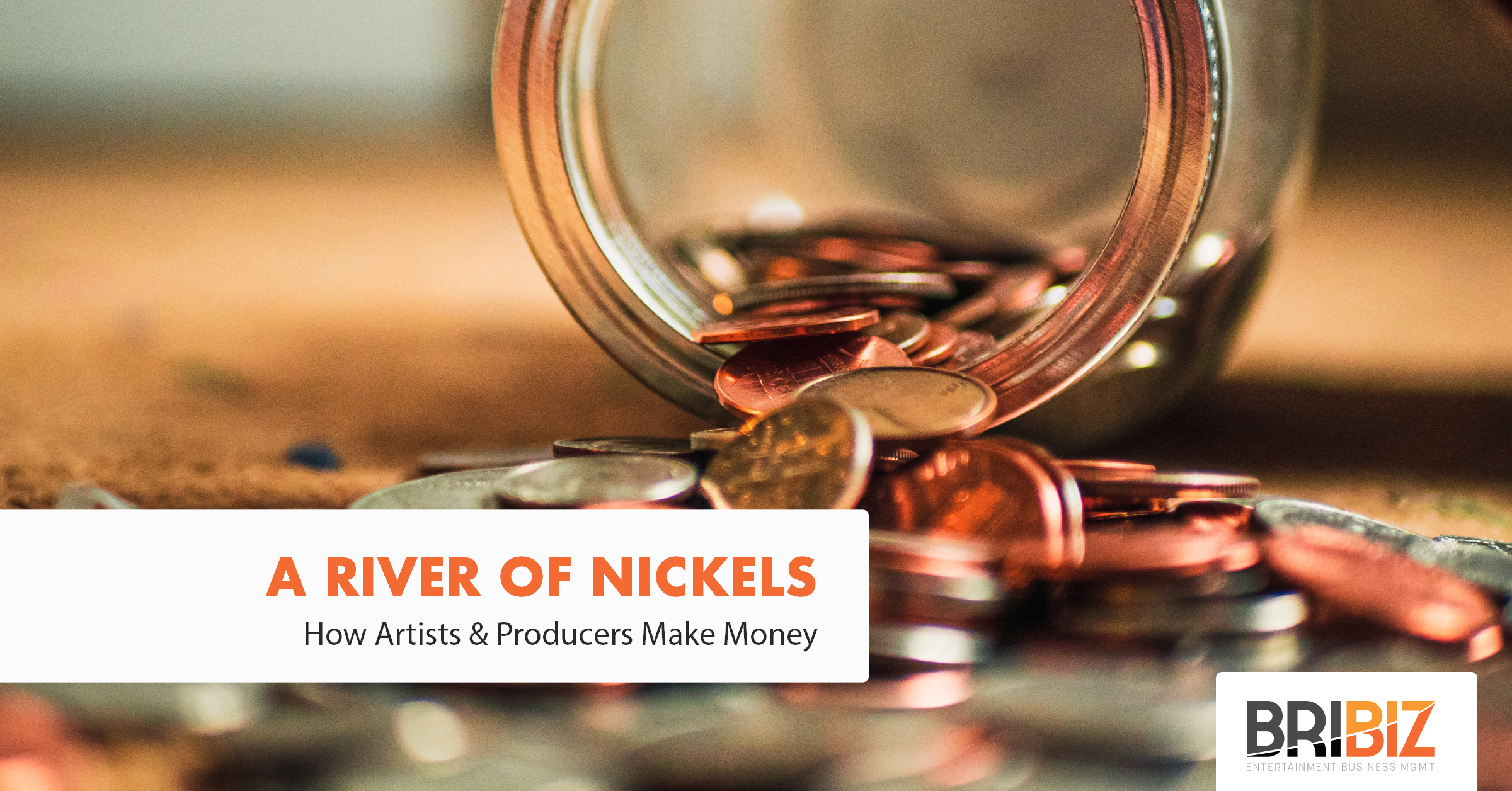Even if you’re just starting out in the music business, you’ve probably heard that it’s “a river of nickels” countless times. You may also want to think of it as a piece of advice: “diversify, diversify, diversify.” But what does it look like to have diversified revenue streams? In fact, even if you’ve been in the business for years, you might look at your income streams and wonder if you’re in the right ballpark. How much money should you be pulling in from writing, shows, or royalties? There’s no magic formula, but I thought it might be helpful to share some benchmarks that we’ve noticed to help you to figure out if you’re on the right track.
FOR ARTISTS
For most artists, the bulk of annual revenue comes from live shows. Touring has traditionally been the best way to generate income by far, as well as build a fan base that will continue to support you in the future. This might not seem like great news in 2020, but there are actually other ways to create an excellent concert experience (I recently shared some thoughts about it here). When traditional “shows” return, though, merch is an excellent revenue stream, and might account for more of your income than you’d think. When you start out as an artist, even now, you’ll likely still sell and promote your new music at your shows, possibly above all else. So don’t neglect to print CDs, especially in Christian or Country. As your base grows, however, your fans will already have or know your music, and you’ll see an uptick in apparel or other merchandise sales, because they’re bought in and are proud to support you and your brand. Some free advice: as you grow as an artist, it’s a good idea to separate your merch and touring accounts and intentionally set aside a little bit of income in each stream. Your touring money will be used to pay for unexpected touring expenses, from transportation to musicians, and your merch money can be used for future marketing and inventory expenses.
Will you make money from recording and streaming? Yes, but it’s not likely to be the lionshare of your revenue, and it may take time. In most cases, making an album means paying for your producer, studio space, session musicians, production costs, and even marketing. It was once common to see a label artist receive a $70,000 advance on an album, only to walk away with $10,000 after expenses. These days, both sides of that equation are considerably smaller. Don’t be too discouraged, though. Music is absolutely worth making, and more people are consuming recorded music than ever before! But it’s important to walk into the process with eyes wide open and recognize that recorded music is a door to multiple revenue streams, not a simple business with one income source. Now, of course, an independent artist who owns their masters can make decent money from streaming, but this is not guaranteed and can feel like an uphill battle for many.
With that in mind, if you’re a new label artist, I would typically expect to see around 45% of your revenue come from touring, with an additional 35% from live show merchandise. Publishing and royalties combined might make up the remaining 20% (with most of that on the publishing side until you’ve recouped with your label). As you grow, these streams will shift a little bit. You might see something closer to 40% touring, 30% publishing, 20% merch, and 10% recording royalties. Of course, these numbers are by no means a hard and fast rule! This is just intended to be a benchmark to measure your revenue streams against so you can notice areas for improvement in your business.
FOR PRODUCERS
If you’re getting started as a Producer, it’s key to remember that, at first, most producers make their living on production fees. In fact, until you are landing projects with more notable artists, you’ll see very little money on the backend at all. So, even though you’ll want to take on projects to get your name out there, know your worth. By charging an up-front, per-song or per-project fee, you’re creating guaranteed income for yourself, which will be essential for building your business further and staying in the game. Like with artists, once you are more established you will see a shift. Songwriting and producer royalties are certainly lucrative, but they typically only materialize alongside recognition and experience. For many established producers, songwriting becomes the primary revenue stream, shooting far past production fees.
2020 might be hitting touring artists hard, but it’s actually a rich environment for many producers., and it isn’t hard to see why. Every touring artist is at home, making new music, all at once. Established producers also typically make more on streaming (since their royalty occurs on the master) than artists who are often still recouping the costs of making their album. Now, as each producer has a different area of focus (some are focused far more on the audio side than writing, for example) it can be hard to create a percentage-style benchmark. So my best advice is to work to make sure you have the appropriate relationships in place to always make money on every front: publishing, songwriting, up-front production fees, and producer royalties on masters. If all four of those areas are producing income, regardless of the percentage breakdown, you’ll set yourself up for success and maximize the amount of your income that is passive over time.
FOR EVERYONE
This year has presented new challenges for all of us in the music industry, whether we make a living in the studio or on stage. Diversification has always been important, but now more than ever, we’re seeing the benefits of getting creative in the myriad ways we bring money in to support ourselves and our dreams. If you need direction with your finances in the music business, reach out to us. We’d love to help you take the next right step.







Leave A Comment